I’ve written articles for local and international publications about game development, events, culture, and more!
10 May 2024, edited by Steph Panecasio
Gameshub: Two weeks on: reflecting on Dreamhack Melbourne 2024
Dreamhack Melbourne 2024: Not quite complete yet, but pretty mature for its age.
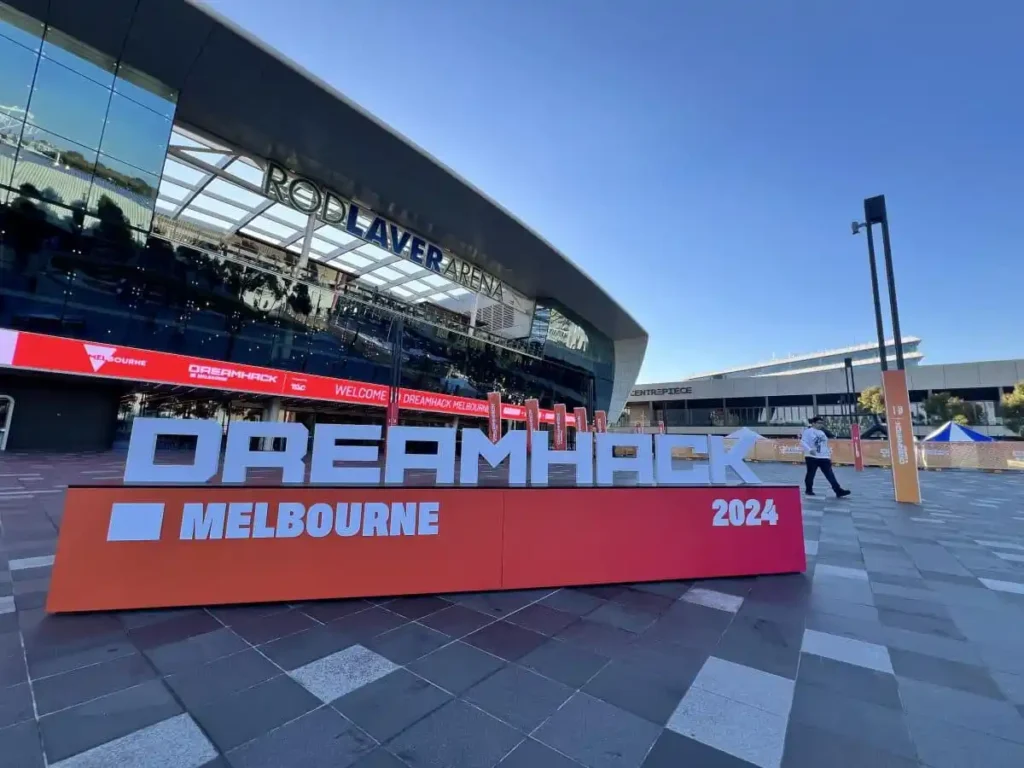
Dreamhack Melbourne 2024 was the first time the convention has taken more steps forward than it has backward. The event’s focus has always been esports, but in previous years it gave few reasons for a core gaming audience – or even pop-culture fans – to attend.
Dreamhack Melbourne, and Melbourne Esports Open before it, tried to draw non-esports fans with pre-release game demos and freeplay areas. More recently, there’s been an emphasis on the artist alley, cosplay competitions, and providing a platform for content creators at all levels. Content creators are used to getting access to an event for coverage, but this year they felt almost as central to Dreamhack Melbourne as you’d expect at TwitchCon or Vidcon.
While a lot on offer at this year’s event felt familiar to gaming creator Sarina after last year, she welcomed the greater participation for creators at the event.
“A lot more creators are coming, and it’s not [just] the big creators that are doing the meet and greets – like it’s everyone,” she said. “It’s more accessible because people are getting given that access, whereas they didn’t have it before.”
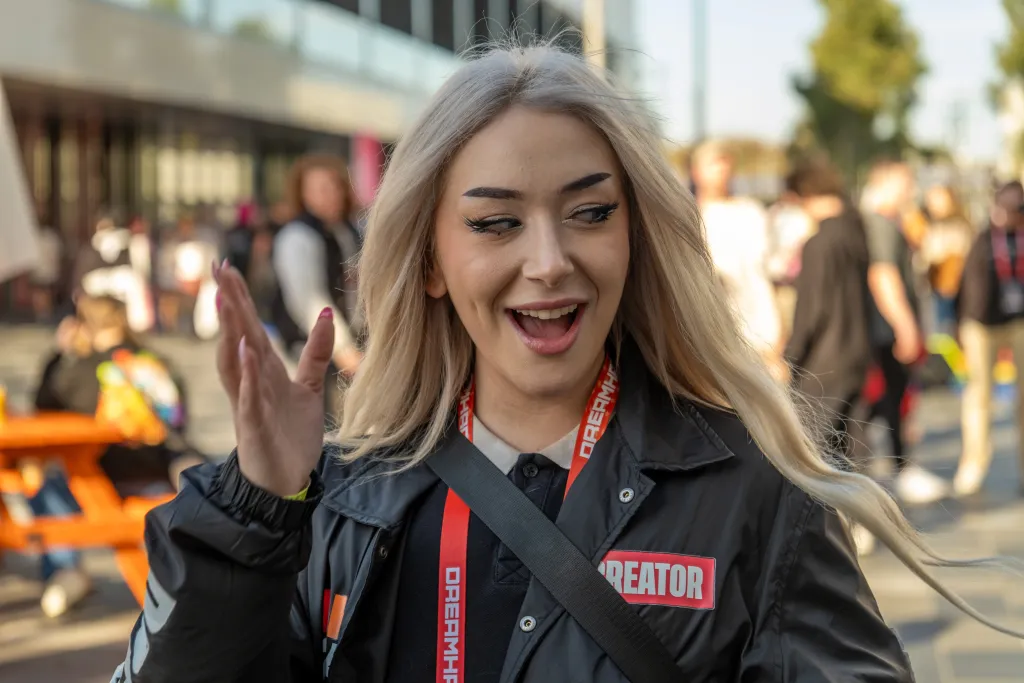
She also felt that the event team had taken feedback from previous events and improved almost every aspect for this year, saying, “The creator lounge is really cool. It was a bit smaller, and there wasn’t as much [last year], so you can tell there’s been, like, a woman’s touch added in certain spaces, especially the artist alley.”
While Dreamhack in Sweden began in the mid-90’s as a LAN party, Dreamhack Melbourne’s emphasis on big esports leagues like Counterstrike and League of Legends meant the Bring Your Own Computer (BYOC) section at times felt like an afterthought.
After awkwardly sitting behind the Main Stage last year in Rod Laver Area, it’s settled back into a (mostly) quiet corner behind the Freeplay area and Speedrunning stage, only accessible to those with a BYOC ticket.
A number of those tickets this year were purchased by CRANK, an NDIS coaching service that focuses on gaming and pop-culture communities. One of CRANK’s coaches, Elijah, said the experience had helped build the crew’s confidence at an event that otherwise might be quite overwhelming.
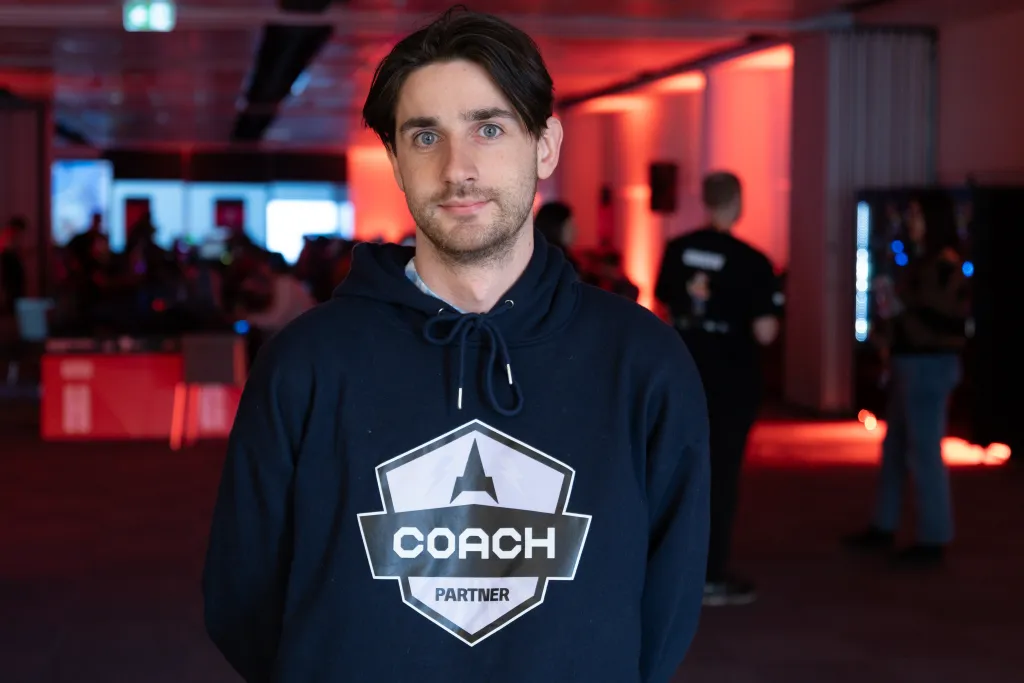
“They’ve had a very fun time playing in tournaments, winning prizes. Just having the experience of playing in a tournament in a safe environment brings those kind of anxiety barriers down,” he said.
“One of our crew is playing Rocket League at the moment. He’s gotten very far, and this is his first ever tournament. He’s in, like, the top 1000 players of Rocket League. He’s here with his mum for a bit of support, and that’s going to give him the confidence […] to participate in larger tournaments.”
There could’ve been much more on offer for students and young people at this year’s event, though. While there was a “Student Day” present in the program schedule, it didn’t go far enough. If students are choosing to attend an event like Dreamhack, there’s a good chance they’d understand the basics.
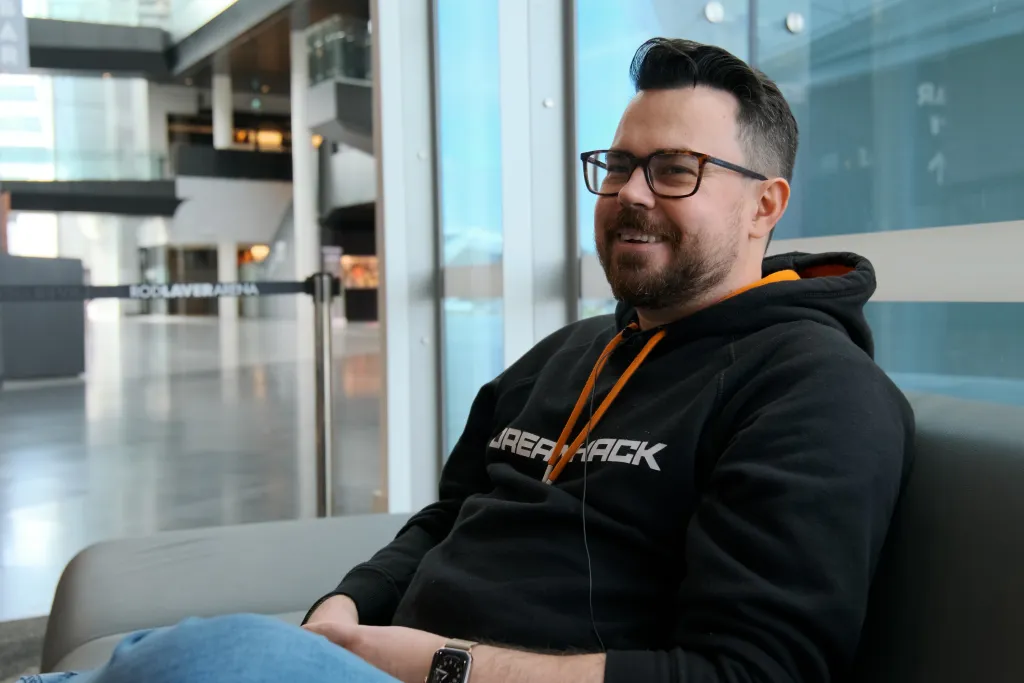
Dreamhack Melbourne 2022 was the first time the event had a student day, and at the time, Ben Green from ESL Australia hoped students would continue to be a big part of the event.
“I would love a Friday of a Dreamhack to be the biggest day of a Dreamhack, because it’s just full of school kids, and they’re coming to panels and they’re learning about things,” he said in 2022.
“And at the end of the day, we have the finals for a school esports tournament. I think that would be really awesome. It’s hard – we have a lot going on. I would love to be able to say, hey, we can hit all of grassroots, we can hit all of schools… The reality is, like, where we are at the moment, it’s about as good as we could do.”
After two weeks of reflection, it’s safe to say that Dreamhack Melbourne 2024 has come a long way since 2022, and even further since Melbourne Esports Open in 2018. With a new sense of maturity and stability about the event, it’s exciting to imagine how next year’s event will draw attendees, while continuing to show off the best of Australian esports.
16 Aug 2024, edited by Steph Panecasio
Gameshub: Guardian Maia at Bitsummit: Māori culture in unexpected places
Kyoto isn’t necessarily the place you’d expect to see games like Guardian Maia, but we’re so glad we did.
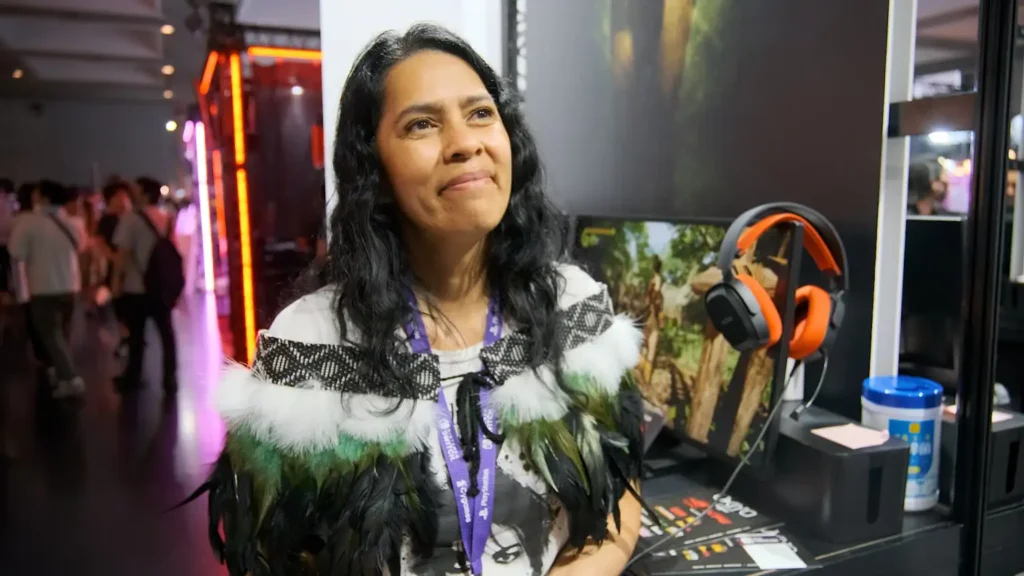
Guardian Maia brought quite a unique experience to both Japanese and foreign gamers alike at Bitsummit in Kyoto last month – a respectful and authentic portrayal of Māori culture.
This upcoming PC game isn’t the first project that developer Maru Nihoniho has worked on that explores Māori culture in a post-apocalyptic world, though. Her all-Māori company, Metia Interactive, has released interactive fiction mobile apps and short animations in the same world. Still, Maru has her sights set on a much bigger release this time.
“I’ve always enjoyed playing games, from the arcade games, right through to the big PlayStation and Xbox games, and I love a story-driven game,” said Maru.
Some of the games that Maru has been influenced by in developing Guardian Maia include Tomb Raider, with all its adventure and puzzle-solving aspects; and Senua’s Sacrifice, which explored heavy experiences of psychosis, while still being fun to play.
“Parts of those games have inspired and helped me work with the story and design of what I’m doing now.”
But authentically representing Māori culture in a project as big as Guardian Maia isn’t easy.
“We’ve done it plenty of times on different platforms. Film, television, books – it’s been done. But when it comes to a game, it’s interactive and it’s immersive and the player is in control,” she said.
“How do we design the game in a way that holds all that respect but gives the player the knowledge that they need to, one, get through the game, but two, to understand the meaning of the culture? That was not an easy thing to do.”
Even after previous projects and years of consultation, it’s something that Maru continues to take seriously.
“I don’t want to be disrespectful to my own culture. I also want to ensure that someone who’s not Māori feels comfortable interacting with that culture, but also learns about our culture as well.”
Getting Guardian Maia in front of the right people
Metia Interactive received start-up funding earlier this year from the New Zealand Centre of Digital Excellence, or CODE, which aims to supercharge the country’s game development ecosystem.
Vee Pendergrast is CODE’s Industry Development Manager, and she was particularly keen to put Guardian Maia – among other New Zealand-developed games – in front of publishers at Bitsummit to take these projects to the next level.
“Games cost money to make. We can help [our developers] to a point, but it’s about finding that business deal, that distribution, that audience,” said Vee.
CODE started as a regional economic development agency in the small city of Dunedin in New Zealand’s South Island. It went from supporting three game studios in town to 25 studios employing over 90 staff in just three years. In the last year, the agency has grown to support developers across the country including Auckland-based Metia Interactive.
“The thing about having a national agency is suddenly you have to be more places. You have to generate more opportunities. We’re looking to places like Bitsummit to help generate those opportunities for the developers that we work with.”
Bitsummit was especially a great place for smaller teams working on projects like Guardian Maia to find new audiences and business opportunities. Even with dedicated indie areas, Tokyo Game Show’s focus remains on showcasing bigger traditional AAA games to Japanese audiences. In comparison, Bitsummit is far more adept at providing networking opportunities for burgeoning developers, publishers, and media from across the globe.
San Francisco’s Game Developers Conference might still provide established game practitioners with the most valuable networking opportunities, but for now, Bitsummit is the Indie king – for Guardian Maia, for gamers, and for the folk who make them, regardless of where they call home.
15 Apr 2019, edited by Rae Johnston
Junkee: Should You Bother Playing Yoshi’s Crafted World?
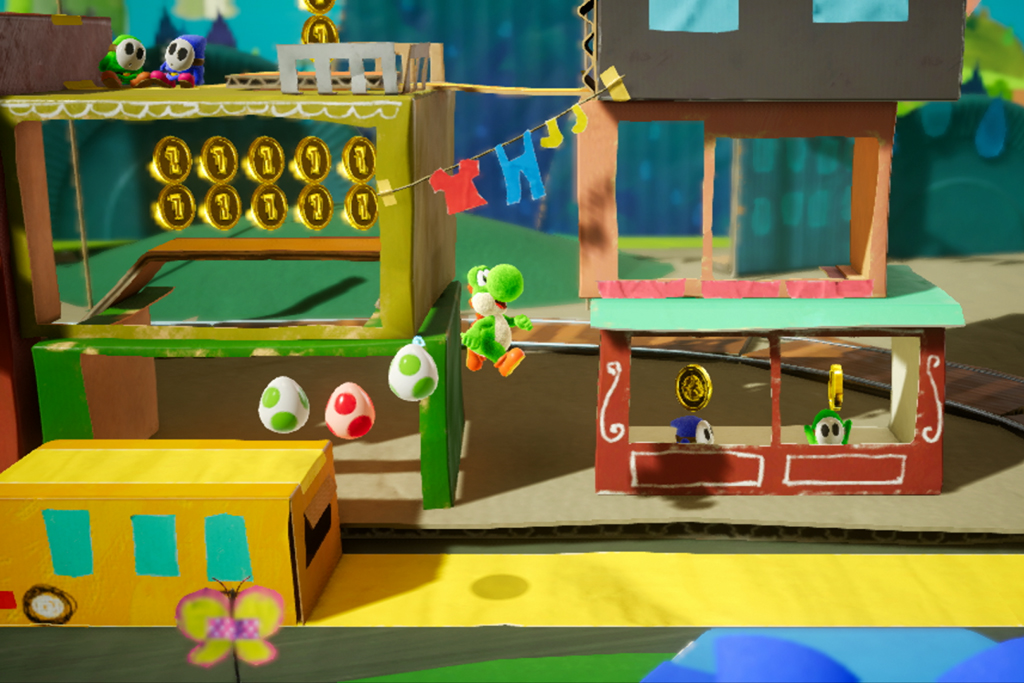
Yoshi’s Crafted World fills a gap. Even though we’ve had the 3D platformer renaissance thanks to the likes of Mario, Yooka Laylee, Crash, and Spyro, sidescrollers have been relatively quiet, plodding along in the background.
Yes, we’ve even seen great releases from Aussie devs in The Adventure Pals and Hollow Knight. Celeste was my game of 2018. Nintendo is pumping out quality 2D platformers with Kirby Star Allies and Donkey Kong Country: Tropical Freeze. But here’s the thing — they’re for completely different crowds.
Kirby is unmistakably a kids game. While it’s packed with gorgeous visuals and charm, there’s barely any challenge. Playing gets old if you’re over the age of 12. Donkey Kong tends to be on the more difficult side, with its fiendishly tricky level design.
Yoshi’s Crafted World lands right in the middle. The star of any sidescroller – its levels – are sprawling, and anyone can finish these levels without too much trouble. The challenge here lies in collecting as you go. The game actively encourages you to be curious in poking around in every nook and cranny to find hidden red coins, health, and – the big one – flowers. It means that getting to the end of a level, and seeing the flowers stack up (if you were persistent enough) feels really satisfying.
Red coins are often the most mischievous to collect. Since the flower is only awarded if all 20 red coins are accounted for, I’d usually just miss it after collecting 17 or 19 red coins. SO CLOSE. The trickiest part of a stage by far is the timed challenges. These appear when you shoot one of the clouds with a clock on it, and they can see you shooting eggs at a flower in a screen of phoneys, or collecting all the blue coins in about no-time-flat. The best advice I can give on these is just make sure you have a pile of eggs at your disposal – you’ll need them.
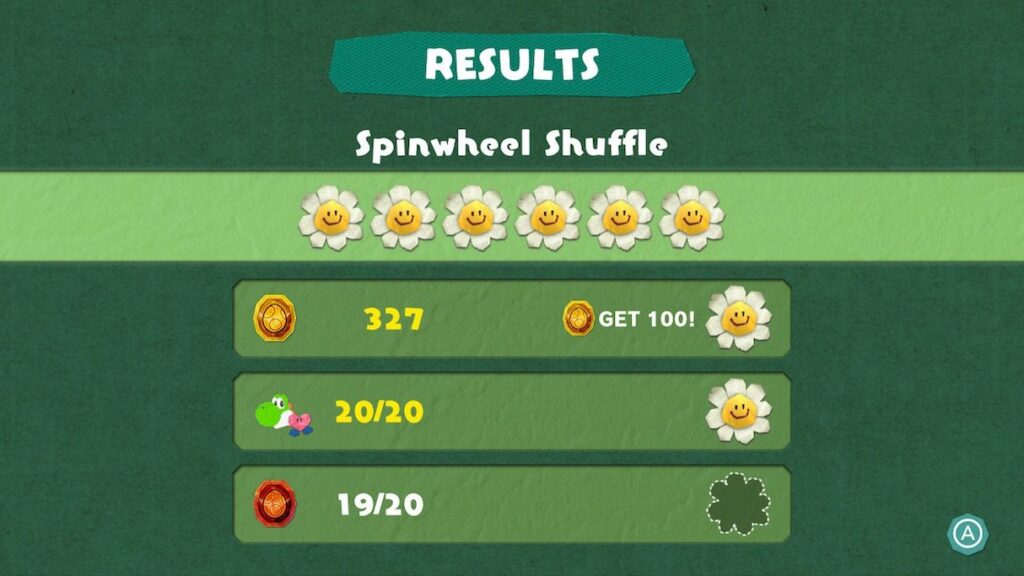
These levels also feel just the right length to be on the Switch. Long enough to sit down and play on the couch, but short enough to make solid progress on the train. One of the cuter aspects of each stage is that once you complete it, you can play it backwards and hunt for the three hiding Poochies for another opportunity to grab those flowers. The world map is a pretty basic way of linking each level to the next, and you’re required to hand over about a dozen flowers after every few stages. So while it’s frustrating to just miss a few flowers in each level, it’s not gonna stop you moving forward.
Between levels, you have the option to spend coins on adorable outfits to have Yoshi wear as a Craft Cat, Cupcake, or (my favourite) the Mint Macaron. These outfits vary in rarity, but they also have a practical purpose. When Yoshi’s damaged in a level, these outfits serve as armour, protecting against three to five hits – which can come in handy if you’re wanting to get that flower for max health.
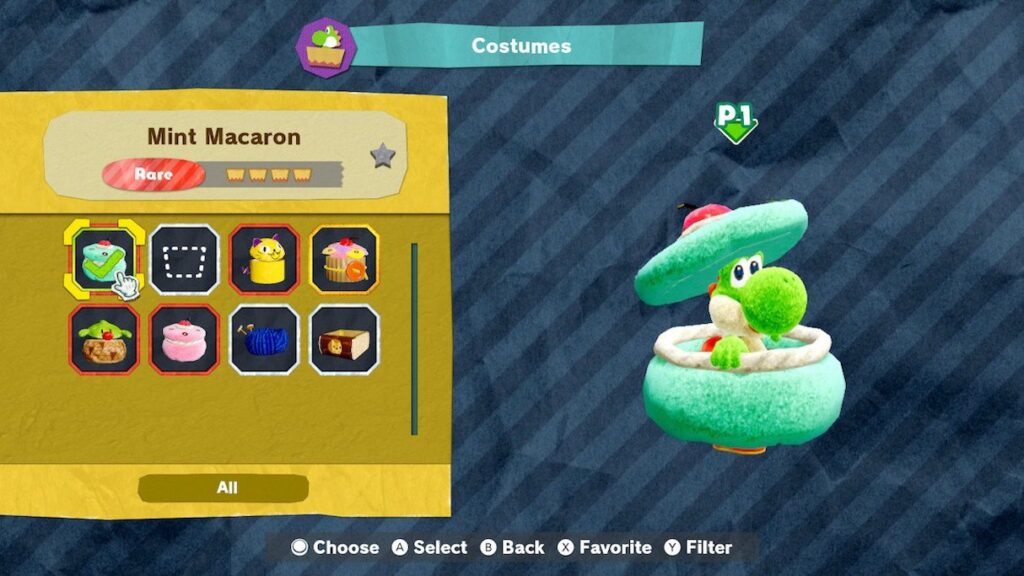
Cutscenes and dialogue are pretty sparse, but when they pop up, it’s charming enough that it doesn’t detract from the world. The overall plot is pretty standard Yoshi fare, with Kamek and Baby Bowser just generally trying to make life hard for Yoshi. While I appreciated the banter between Kamek and Baby Bowser before some of the boss fights, there isn’t a whole lot else to say about the limited narrative.
While it’s nice the game runs without a hitch, it almost looks like a repurposed 3DS game. Even though you can chalk some of this up to the “Crafted” style, assets and models look pretty blocky. The way Yoshi walks into and out of the screen makes it feel even more like it was designed for the 3DS first, then tweaked for the Switch.
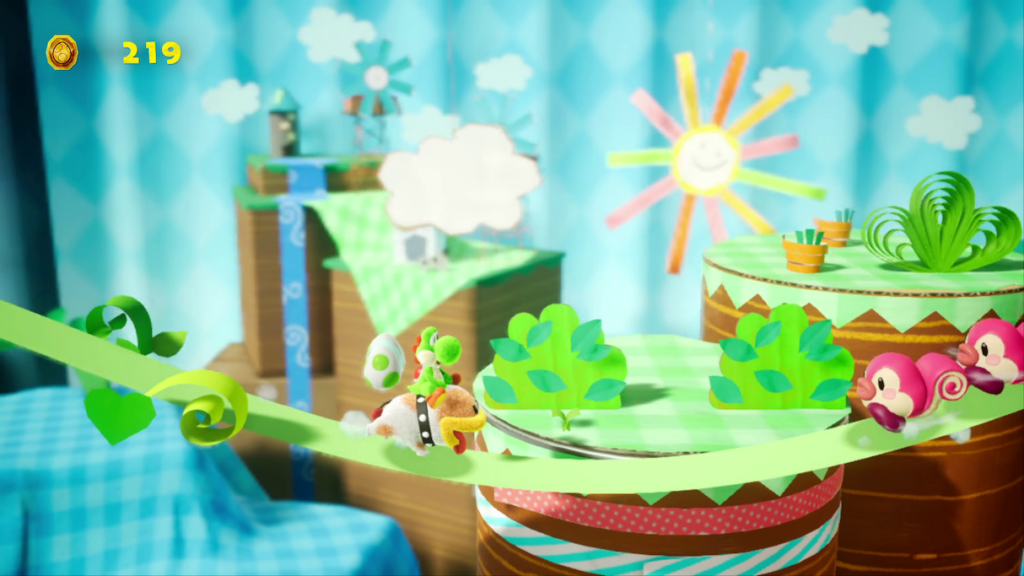
Yoshi’s Crafted World is just another Yoshi game with a new coat of paint and the same 2D platforming you’d expect from the series. But that’s not a bad thing. I’m happy to have a new game to chip away at on my Switch that’s not too hard, and not too easy. Yoshi’s Crafted World is the “just right” of sidescrollers.
17 Jan 2018, edited by Jody Macgregor
PCGamer: How InnerSpace’s creators made their disorienting flying game playable
In an inverted world with alien physics, teaching people to fly isn’t easy.
InnerSpace was successfully funded on Kickstarter all the way back in 2014, and it’s come a long way since then. It’s an exploration game where you zip about topsy-turvy worlds discovering relics of an ancient civilization, and the trailer shows a delicate, bird-like craft traveling past coral superstructures, stone ruins, and alien architecture. That ship, called the Cartographer, is also shown opening portals and crashing through glass, and becoming a submarine when it hits water. It’s all a bit perplexing, but looks lovely nonetheless.
InnerSpace is the first commercial release from indie studio PolyKnight Games. We spoke with artist Steve Zapata, designer Eric Grossman, and director Tyler Tomaseski about how they helped players learn to fly, and what their plans after release are.
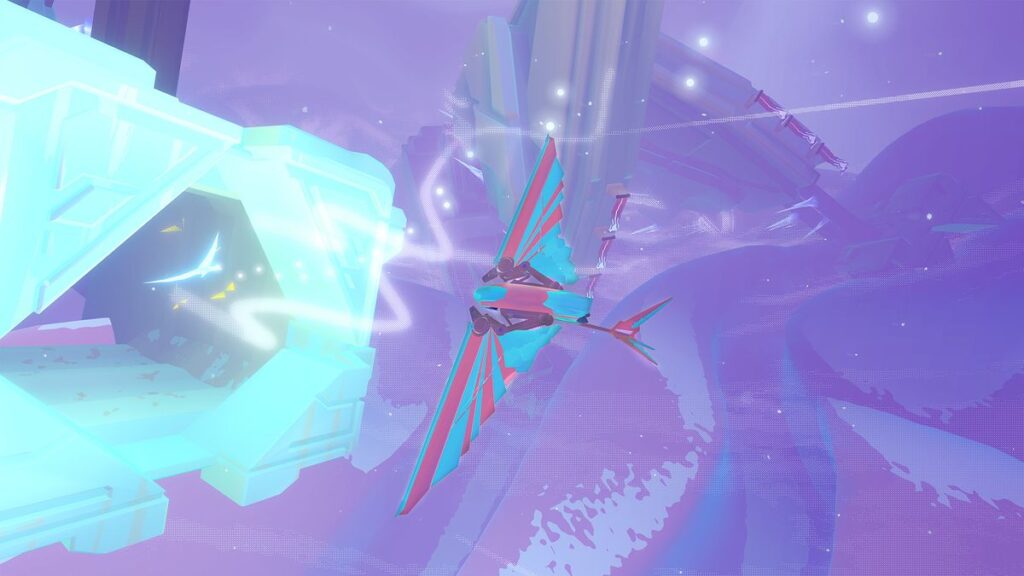
PC Gamer: How did PolyKnight Games come about and how did that lead into development of InnerSpace?
Tyler Tomaseski: We started out at college, at University of Texas, Dallas. We originally started working together on a lot of small projects. Steve and I did a few game jams together, and some longer term projects too. We did three separate four-month-long projects where we “shipped” a really small game, just for free. After that, we decided—because we were working so well together—to start a company developing indie games.
Steve and I rallied up some good friends we worked with previously, like Eric Grossman, Eric Brodie, and Chris Miller. We were the core five making up the studio. We were about as small as you can get for a 3D team. Then we started working on InnerSpace.
It was the game we’d been talking about for a while. We were really interested in space and this concept of inverted worlds. We started with that, then worked our way toward a flying game. Just for the sake of wanting to explore that space, we kind of figured out everything else along the way. We were trying to figure out what sounded most fun inside of that space.
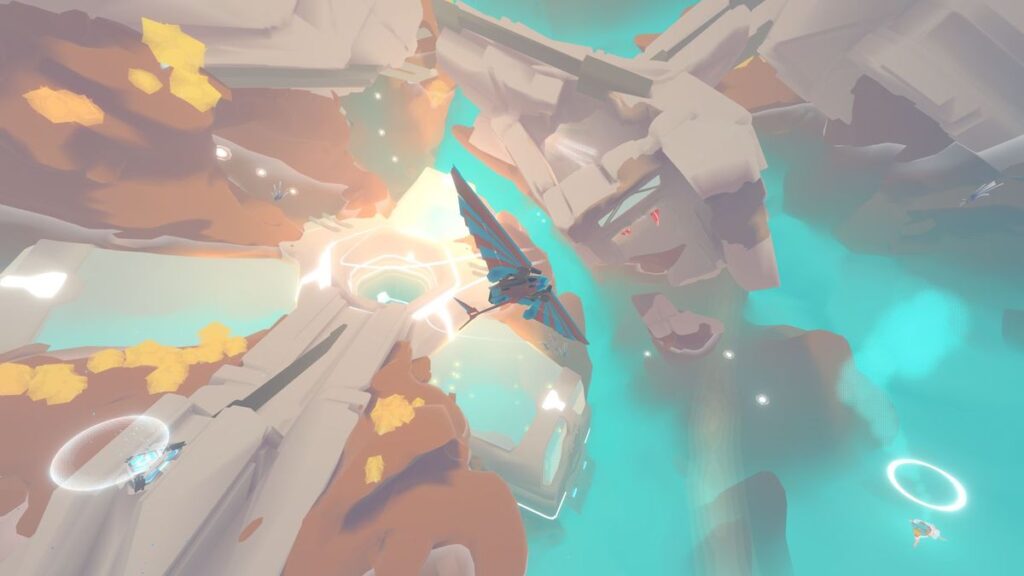
We worked our way towards Kickstarter, and had a successful campaign. We worked on our own for a year or two, and then we partnered up with Aspyr after we met them at PAX South. Thanks to Aspyr, we were able to increase our team size from five to seven. We’ve ported the game to all the consoles since then too. Originally, we were only working on Windows and Mac, but we’ve added support for Xbox, Playstation, and Switch since then.
It literally started in our bedrooms. We had a little studio setup in my bedroom where Steve and I both worked on it. Steve would wake me up and I’d just work on it in my pajamas. But yeah, that’s how it started.
So the flying came later—how did you develop those mechanics specifically?
TT: The first attempt I did at it was a very floaty, realistic, more simulation-style flying game. There, it’s a lot more gradual movement over time. You have soft inputs to try and steer it. Something I realized very quickly is that because the space is so disorienting, we needed to give the player as many tools as we could to have the game respond to them in a very arcadey kind of way. That way, they can orient themselves how they want.
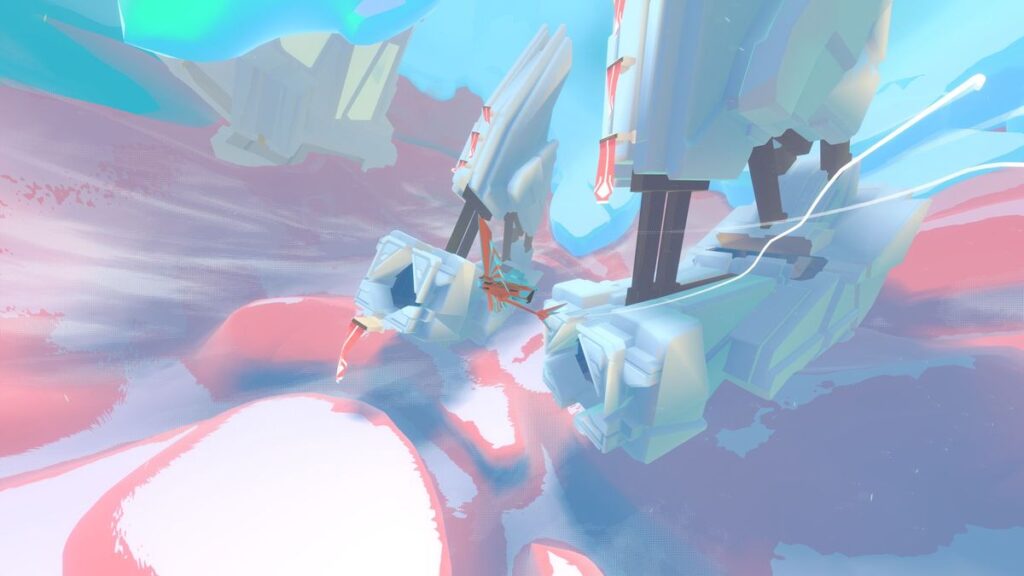
For that, we introduced the drift/stall mechanic where you can change direction without moving your plane that way. It’s why we landed on a plane that is very responsive and does exactly what you want it to do. It’s also why we made the plane very durable. We decided we wanted to make a flying game where you can run into stuff. I couldn’t think of a flying game that let you do that. I think it was more of an iterative process where we started with the extreme opposite of what we have now. The arcadey style control lent itself well to getting used to the space.
During InnerSpace’s opening hours, there’s a distinct learning curve as the player progresses from world to world and figures out what’s going on. When did you feel comfortable finalizing that early game progression?
Steve Zapata: A lot of it comes down to how we actually built the game. We started by building the main, primary chamber. The game is set up so that all of the secondary worlds you visit all branch from that main chamber. The first time we built it, it was way too large and disorientating. We scrapped it and built a smaller version, which was also too large. In the process of doing this we’re getting player feedback and we’re building these smaller worlds.
We had a large scale central piece that we learnt to scale down to make more accessible. We also had the smaller worlds which were a bit more focused because that’s where you encounter the boss creatures. They’re designed around a specific encounter. Every time we built one of those smaller worlds, we took information from that process and brought it back to how we approach the central world.
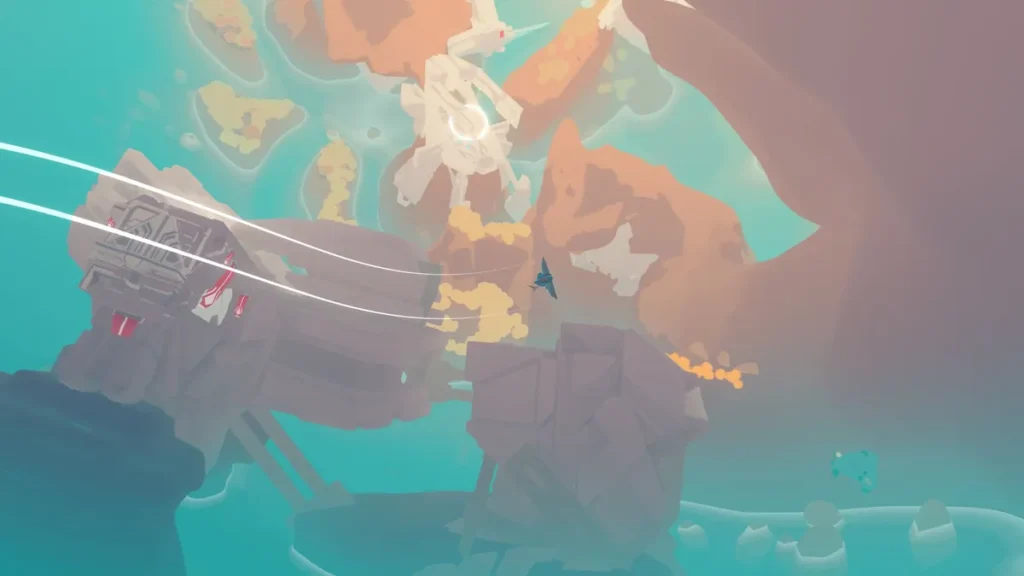
What ended up happening is that the very last worlds that we ended up building were pretty much the tutorial world that you start in. The last boss we built became the first boss you encounter. We kind of worked backward in that sense. In doing so, we were able to apply all of the information that we had gathered by watching people play into the tutorial sequence that introduces them to the game itself.
What that accomplishes is easing players into this very disorienting space. On face value, it’s extremely disorienting. You have to get players used to the idea that they don’t need to look for “up”. The idea of “up” doesn’t really matter in our game, just like how there’s no horizon.
Because it’s an exploration game, there’s a moment where we, as designers, have to let the player figure it out on their own. We need to teach them to explore and discover. Part of doing that is taking the training wheels off as the player progresses through the tutorial. We let them get a little lost so they can find their way out. The hope is that players will learn through looking and exploring.
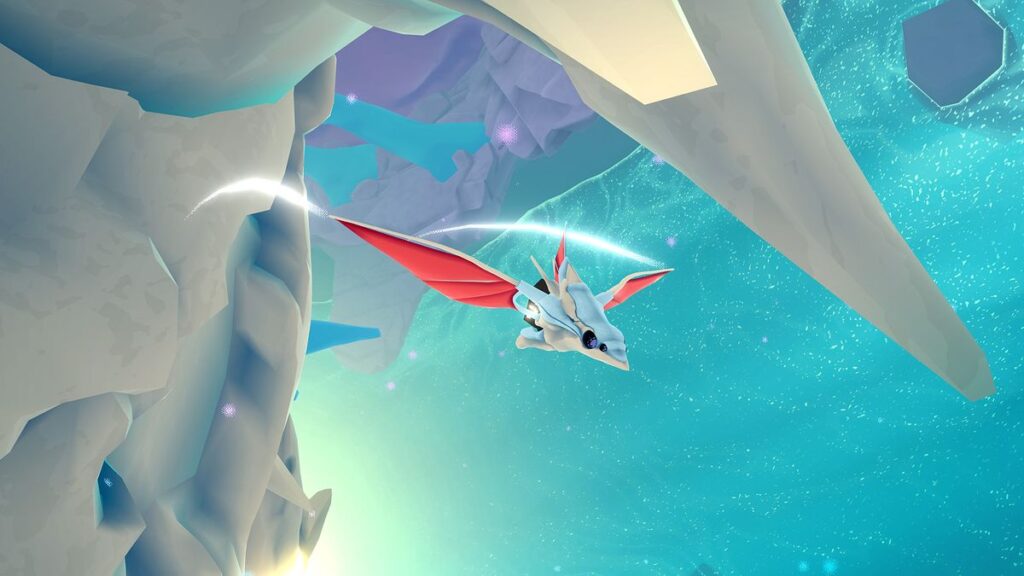
Aspyr was heavily involved with porting InnerSpace to consoles. How did Aspyr contribute to the PC release?
TT: We haven’t only been working on ports since working with Aspyr. We’ve actually doubled the content of the game. Since we started working with Aspyr, we have twice as many worlds and bosses. There was just a level of polish that was not going to be there before.
Another thing was optimization. Getting the game working on Switch means things run faster. Where before it would have required a pretty good gaming computer, you can get away with a lot more now. I think it’s going to be a lot more accessible for the PC audience.
Eric Grossman: I also want to mention localisation. We had a streamer play in French last night and it was amazing. That just would not have been possible if we were just going in on our own.
TT: Yeah, how many languages are we on now?
SZ: I think it’s like eight total. It’s so cool seeing it in other languages.
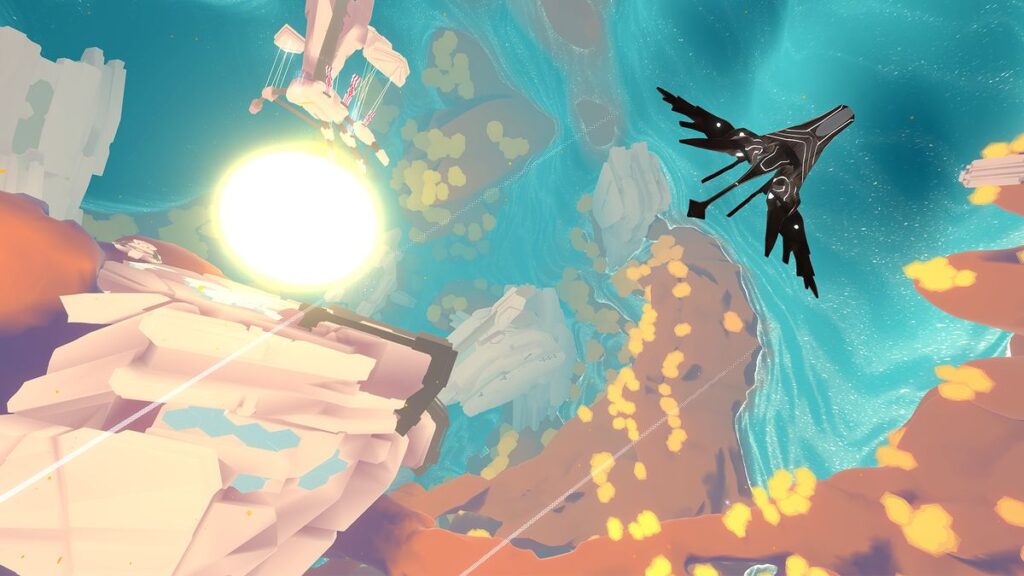
Now you’re seeing it in the hands of streamers and media, what’s been the public response?
EG: It’s really interesting. We’ve started to see people get their hands on it—a lot of influencers too. A lot of the press are still working on what they’re gonna write, so we don’t know what the response will be like there. As we’ve seen in the past, people are attracted to the visuals like honey, but then when they sit down with it, they don’t quite know what they’re getting into. We start to see this warm-up period, where once someone has sat down with it for half an hour, they really start to gel with it.
Now that we’ve actually gotten it to a finished product, we’ve seen a version of that in the wild. It’s really gratifying because we see people who swooned over all the early development stuff and they’re coming to grips with the learning process that Steve described earlier. For me, I kind of forgot that this is going to be a game that people are going to play and it’ll speak to them on an emotional or aesthetic level.
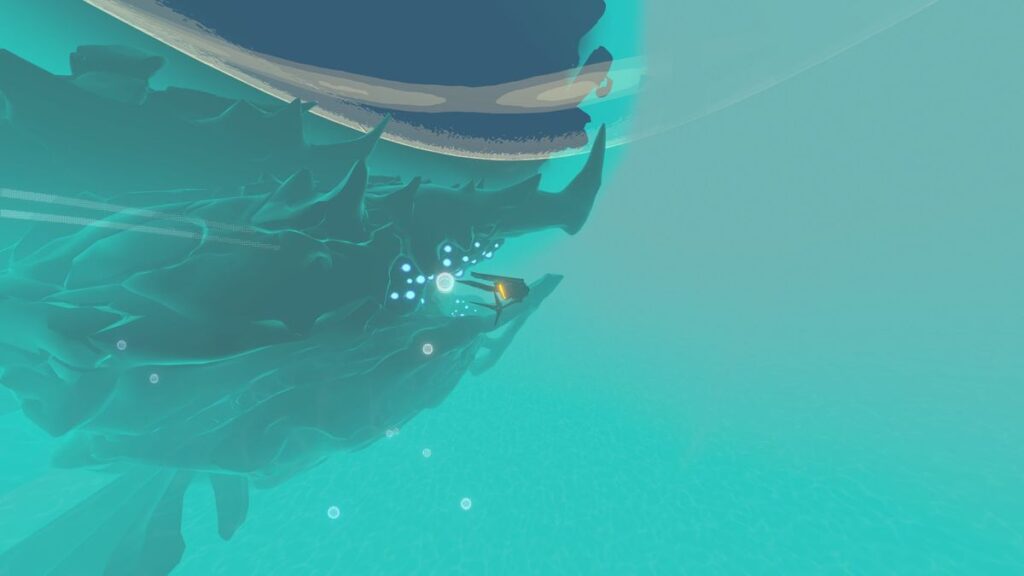
What are your plans looking like after launch?
SZ: I think we’re open to a lot of possibilities. I don’t think we have a decided one just yet. Obviously we’re going to be doing patches and making sure that any bugs brought up in the community are things that we address. We are planning a 30-day patch as a thing for our backers and so people who missed it at launch can be introduced to the game all over again. I can’t touch on what’s going to be in that patch, but we are planning something kind of fun and special for that.
TT: We’ve had some rad ideas for things we could do as a sequel. We’re looking at planes to add as content patches. As far as DLCs or expansions, I think we’re going to wait and see what everyone wants out of the game.
SZ: If we end up doing DLCs or sequels, I very much want to hear what players think. I really want to ingest that and make something those players are going to really like. I think that’s what I’m most excited for personally.
InnerSpace is available on Steam.